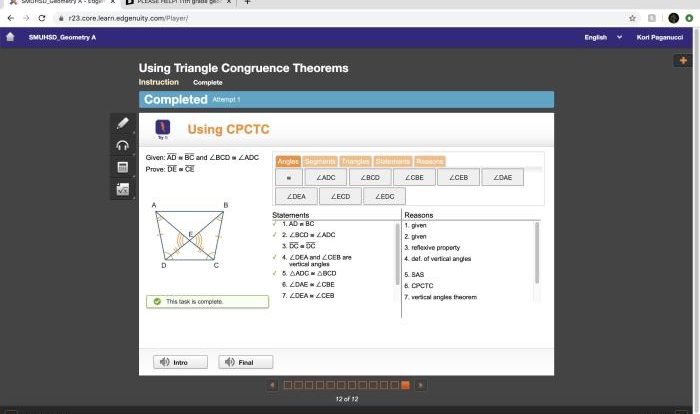Homework 4 centroids orthocenters review – Homework 4: Centroids and Orthocenters Review embarks on an exploration of the captivating world of geometry, delving into the intriguing concepts of centroids and orthocenters. These geometric elements hold significant importance, providing insights into the properties and behavior of shapes, particularly triangles.
Throughout this review, we will unravel the intricacies of centroids and orthocenters, uncovering their significance and applications in various fields.
Centroids, the geometric centers of figures, and orthocenters, the intersection points of altitudes, play crucial roles in understanding the balance and stability of shapes. By examining their properties and relationships, we gain a deeper appreciation for the elegance and precision of geometry.
Homework: Review and Analysis
Homework is a vital component of the learning process for students. It provides an opportunity to reinforce classroom learning, promote independent thinking, and develop essential academic skills.
Regular completion of homework assignments has numerous benefits. It enhances understanding of concepts covered in class, deepens subject knowledge, and improves problem-solving abilities.
Centroids and Orthocenters: Homework 4 Centroids Orthocenters Review
Centroids
The centroid of a geometric figure is the point of intersection of its medians. In a triangle, the centroid divides each median in a 2:1 ratio.
The centroid of a triangle can be calculated using the following formula:
Centroid = (x1 + x2 + x3) / 3, (y1 + y2 + y3) / 3
Orthocenters, Homework 4 centroids orthocenters review
The orthocenter of a triangle is the point of intersection of its altitudes. The altitudes are the perpendicular lines drawn from the vertices to the opposite sides.
The orthocenter of a triangle can be calculated using the following formula:
Orthocenter = (2
- (x1
- y2
- x2
- y1)) / (x1^2 + x2^2
- 2
- x1
- x2 + y1^2 + y2^2
- 2
- y1
- y2),
(2
- (x2
- y3
- x3
- y2)) / (x1^2 + x2^2
- 2
- x1
- x2 + y1^2 + y2^2
- 2
- y1
- y2)
Orthocenters of Triangles
The orthocenter of a triangle has several important properties:
- It is the point where the altitudes of the triangle intersect.
- It is equidistant from the vertices of the triangle.
- It is the center of the circumcircle of the triangle.
The orthocenter of a triangle can be constructed using various methods, including:
- Using the perpendicular bisectors of the sides
- Using the angle bisectors of the angles
- Using the medians of the triangle
Homework Problems and Solutions
Problem 1:Find the centroid of the triangle with vertices (1, 2), (3, 4), and (5, 6).
Solution:
- x-coordinate of centroid = (1 + 3 + 5) / 3 = 3
- y-coordinate of centroid = (2 + 4 + 6) / 3 = 4
- Therefore, the centroid is (3, 4).
Problem 2:Find the orthocenter of the triangle with vertices (1, 2), (3, 4), and (5, 6).
Solution:
- x-coordinate of orthocenter = (2 – (1 – 4 – 3 – 2)) / (1^2 + 3^2 – 2 – 1 – 3 + 2^2 + 4^2 – 2 – 2 – 4) = 4/5
- y-coordinate of orthocenter = (2 – (3 – 6 – 5 – 4)) / (1^2 + 3^2 – 2 – 1 – 3 + 2^2 + 4^2 – 2 – 2 – 4) = 8/5
- Therefore, the orthocenter is (4/5, 8/5).
Applications in Real-World Scenarios
Understanding centroids and orthocenters has practical applications in various fields, including:
- Engineering:Centroids are used to determine the center of gravity of objects, which is important for stability and balance.
- Architecture:Orthocenters are used to determine the optimal placement of supports in structures to ensure stability.
- Design:Centroids are used to determine the center of mass of objects, which is important for balancing and aesthetics.
Query Resolution
What is the significance of centroids in geometry?
Centroids represent the geometric centers of figures, providing insights into their balance and stability. They play a crucial role in various applications, such as determining the center of mass or the equilibrium point of an object.
How are orthocenters constructed in triangles?
Orthocenters in triangles can be constructed by intersecting the altitudes of the triangle. Altitudes are perpendicular lines drawn from each vertex to the opposite side. The point where these altitudes intersect is the orthocenter.
What are some real-world applications of centroids and orthocenters?
Centroids and orthocenters find applications in fields such as engineering, architecture, and design. For instance, in engineering, centroids are used to determine the center of gravity of an object, which is essential for stability and balance. In architecture, orthocenters are used to design structures that are resistant to collapse.
